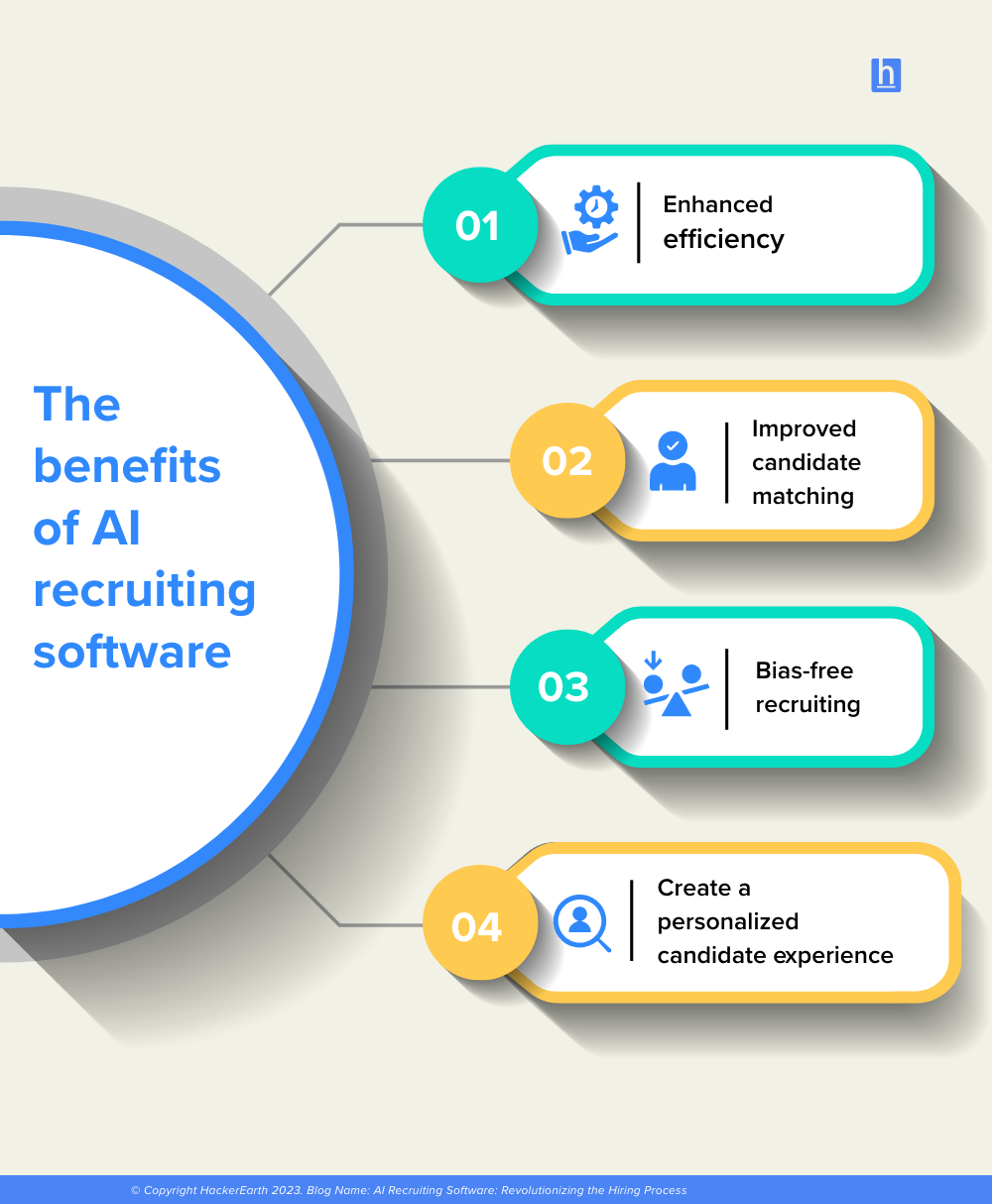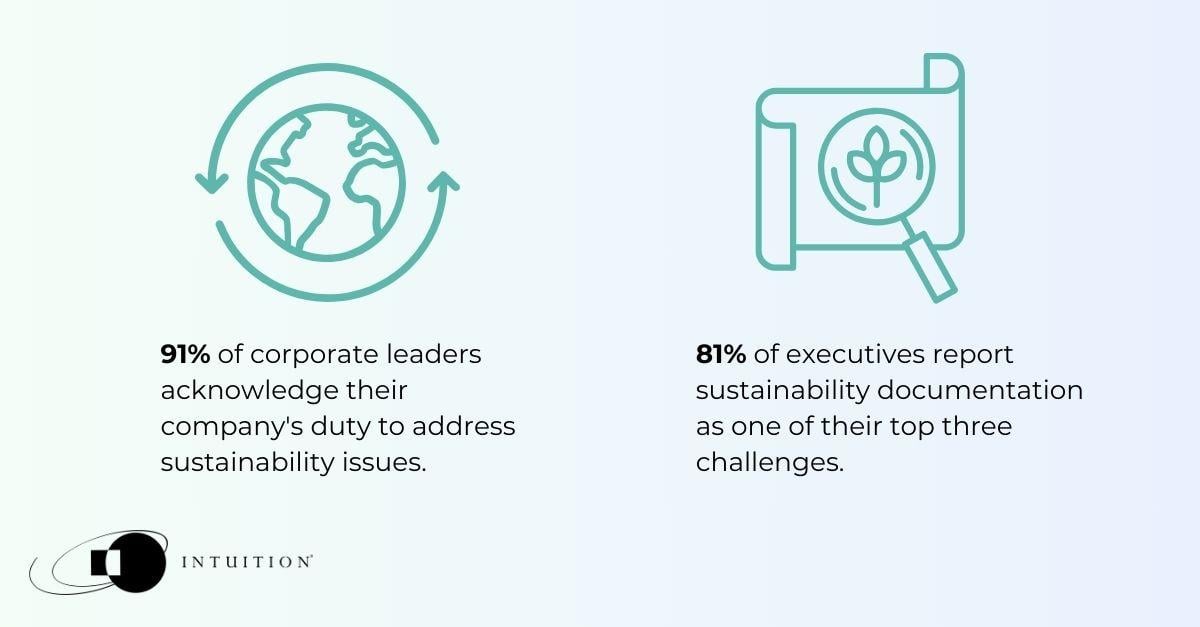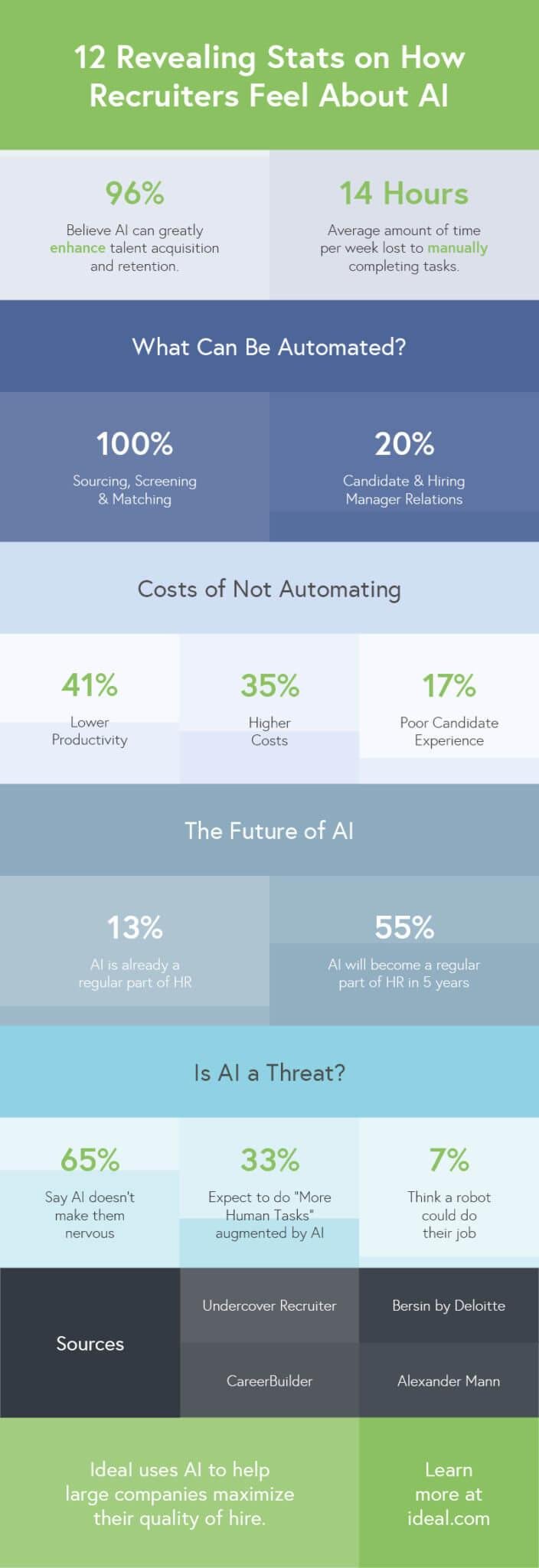Feeling overwhelmed by resumes? Struggling to find the perfect fit? If these hiring headaches sound familiar, you're not alone. Many hiring managers grapple with the challenge of sifting through piles of applications, only to end up with candidates who don't quite match the job requirements. There's a solution to this problem that can streamline your hiring process and ensure you find the right talent: job analysis.
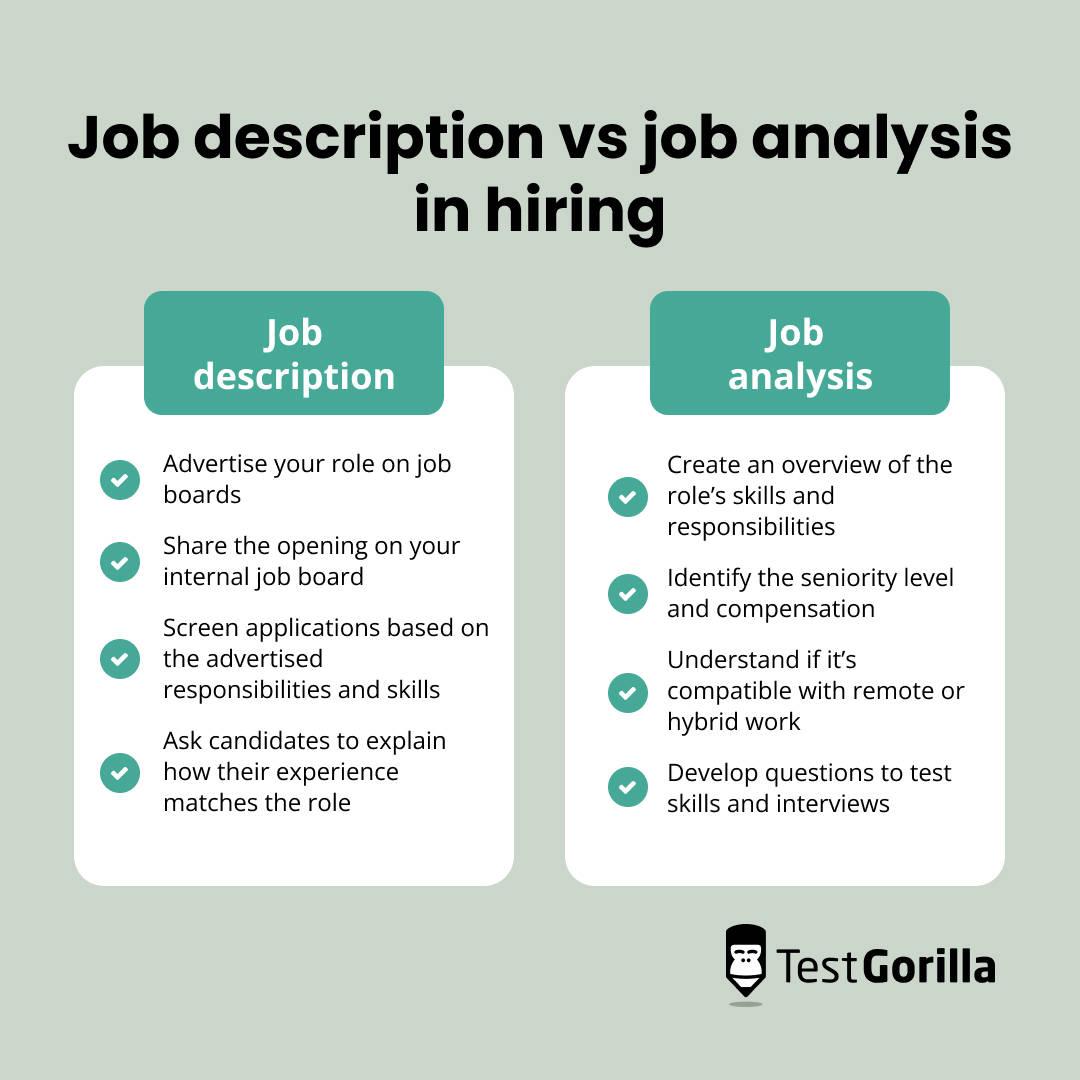
It really comes down to this, job analysis is strategic endeavour while a job description is a tactial one. Source: Test Gorilla
What is job analysis?
Job analysis is a systematic process of collecting and evaluating information about a job's tasks, responsibilities, and the necessary skills, knowledge, and abilities required to perform it effectively. This comprehensive understanding of a job provides the foundation for various human resource activities, such as recruitment, selection, training, performance evaluation, and compensation.
Essentially, job analysis should be an exercise done right before the elaboration of a job description for a role.
It might sound simple, but analyzing the "why," "what," "when," and "how" of a vacancy at your company is crucial. Before posting, consider all the possible questions about the position.
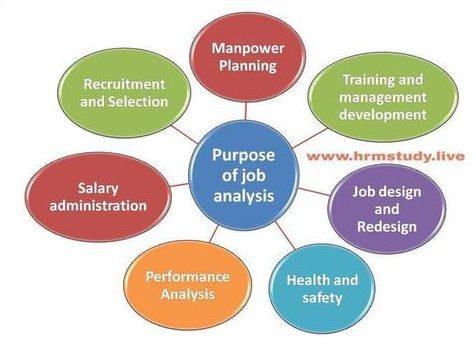
1. Job analysis vs job description: know the difference
A job analysis identifies the requirements, responsibilities, and necessary skills for a position. It acts as a detailed blueprint, outlining what is needed for success in the role. In contrast, a job description markets the role to potential candidates, emphasizing key responsibilities, qualifications, and benefits to attract the right applicants.
In simple terms, job analysis is a strategic piece of work, while a job description is an executive one. These should be viewed as parts of a single exercise, with job analysis preceding the job description. However, in practice, hiring managers, talent acquisition specialists, and recruiters often skip directly to creating the job description due to time constraints, overlooking the critical step of job analysis.
2. Actually doing a job analysis
For this part of the job analysis, consider both current and future responsibilities. What do you want that person to own, do, create, and achieve for the organization? An example would be:
- Manage daily operations
- Develop and implement strategies
- Coordinate with other departments
- Oversee project timelines and deliverables
- Lead team meetings
- Hands-on involvement in some areas.
- etc
Prioritize:
The most crucial tasks are typically highlighted first on the bullet point list, ranked from most important to less important. While it may seem that everything is important, the reality is that the daily pressures within any organization will dictate the primary responsibilities of a role. Reflect on this thoroughly, as candidates need to envision themselves fulfilling the mission.
3. Mapping the role's landscape: understanding the bigger picture
How is the role going to interact with other stakeholders in the company? what will be the resources for that person in the position? How is it expected that the role relates with other departments? You should map out, even on a paper or a board, how all the nodes in the company interact with the job.
Departmental Interaction:
The role interacts extensively with various departments within the organization to ensure smooth operations and achieve strategic objectives. Here’s how it collaborates with key departments. For example:
Marketing: Collaborates on promotional campaigns and product launches.
Finance: Works closely for budget planning and financial reporting
Human Resources: Coordinates on staffing needs, training programs, and employee development.
Operations: Aligns strategies for efficient project execution and resource allocation.
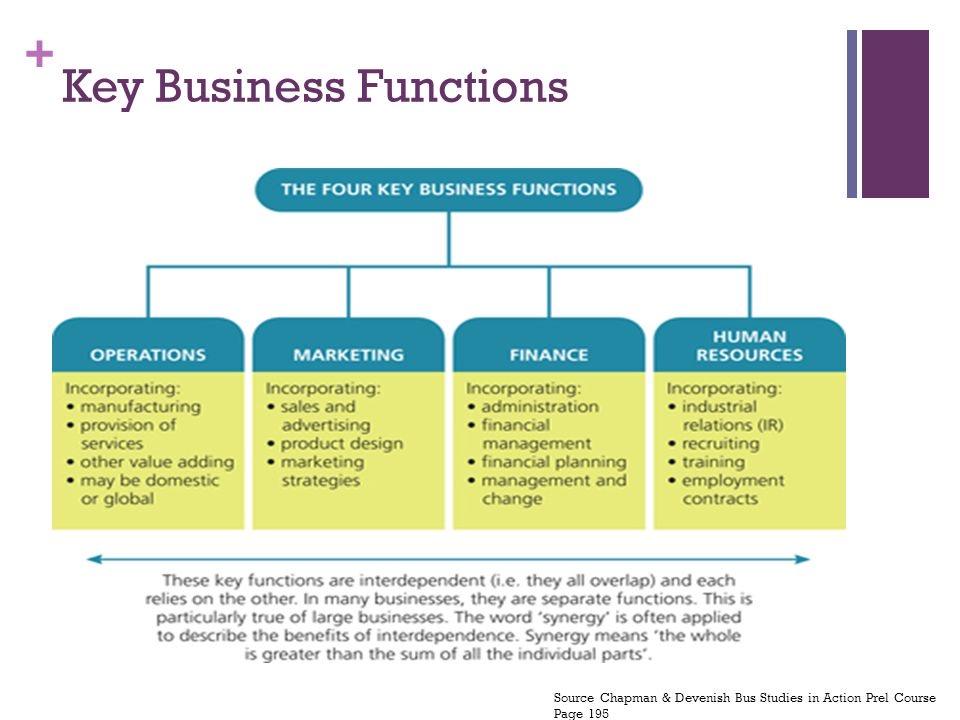
Just an example, but every roles has its nuanced interactions and hyerarchies connected to the other departments of the company. Source: Graph
This visualization can help stakeholders understand how the role interfaces with other departments, emphasizing its importance in organizational alignment and cross-functional collaboration.
4. Setting up for success: tools and resources
What are the tools that ideally the job will require? this is a question that will need specific answers. For example:
Software:
- Project management tools (e.g., Asana, Jira)
- Communication platforms (e.g., Slack, Microsoft Teams)
- Data analysis software (e.g., Tableau, SPSS)
- Industry-specific software (e.g., Salesforce, Adobe Creative Suite)
Equipment:
- Computers and laptops (e.g., Dell, MacBook)
- Printers and scanners (e.g., HP, Epson)
- Office furniture (e.g., desks, chairs)
- Mobile devices (e.g., smartphones, tablets)
Other Resources:
- High-speed internet connectivity
- Office supplies (e.g., paper, pens)
- Training materials and resources (e.g., online courses, workshops)
- Access to databases and research tools
This inventory ensures that the role has access to essential tools and resources needed for efficient job performance.
.jpeg)
A typical project development tool dashboard; any digital job would need and require candidates to master one or more tools like these.
5. Building the perfect candidate profile: key skills
Again, what is the ideal set of skills that we would like our candidates to have? for example, a divison betwen hard skills and soft skills should be useful to understand the balance between the two on our future requirements. For example:
Hard Skills:
- Proficiency in project management tools (e.g., Asana, Microsoft Project)
- Data analysis and reporting (e.g., Excel, Tableau)
- Budget management and financial analysis
- Industry-specific knowledge (e.g., CRM systems, design software)
Soft Skills:
- Leadership and team management
- Effective communication and interpersonal skills
- Problem-solving and decision-making abilities
- Adaptability and resilience
Prioritize:
Critical skills include proficiency in project management tools, data analysis, and effective communication, as these directly contribute to successful job performance.
7. Charting the course: role's position in the organisation
Current & Future Structure:
If we imagine a role that currently reports to the Director of Operations and collaborates closely with the Marketing, Finance, and Human Resources departments. As the company expands, the role is expected to evolve into a senior management position, potentially overseeing multiple teams and strategic initiatives.
![]()
After salaires, the potential progression of a candidate within an organisation is what attracts them to the offer. Source: Career Progression Framework: What It Is & How to Build One
8. Avoiding silos: verifying overlapping responsibilities
Stakeholder Input:
Consulting with stakeholders is crucial to ensure there are no overlapping responsibilities between roles. By gathering input from different departments and team members, you can:
- Identify any redundant tasks or duties
- Clarify role boundaries and expectations
- Enhance collaboration and communication across teams
- Ensure all responsibilities are covered without duplication
Before anything, you shoud do a proper job analysis, the smaller the company, the more important it becomes.Source: HRM Studies
Why is it important?
Job analysis as strategic tool, will become important in the long term, as an accumulative best practice that will work in your favour overtime, if you consistently can practice it. To mention but a few of the upsides of it:
Attract Top Talent
A well-conducted job analysis helps you create precise job descriptions that highlight key responsibilities and requirements that hopefully resonate with the person suitable for the role. This clarity attracts candidates who possess the right qualifications and are genuinely interested in the role, increasing the quality of your applicant pool.
Reduce Hiring Time
With clear job descriptions and specifications derived from job analysis, the screening process becomes more efficient. Hiring managers can quickly identify candidates who meet the criteria, reducing the time spent on reviewing unsuitable resumes and conducting unnecessary interviews.
Improve Employee Retention
By understanding the essential functions and competencies required for a job, you will be able to attract and select candidates who are not only qualified but also a good fit for the organizational culture and the specific role. This alignment leads to higher job satisfaction and reduces turnover, as employees are more likely to thrive in positions that match their skills and career aspirations.
Job analysis is your advantage against the competition for hiring success, ensuring that you not only attract and hire the best talent but also retain them in the long run. By investing time in understanding the intricacies of each role, you can transform your hiring process and build a more effective, satisfied, and stable workforce.
Conclusion:
Prosperity
If you are seeking a job in digital or need assistance with your recruitment efforts, check out our website! https://www.prosperity.ie/
If you want to know more about the recruitment process at Prosperity get in touch!
Moreover, if you are looking for guidance on salaries, download our 2024 Salary Survey!


